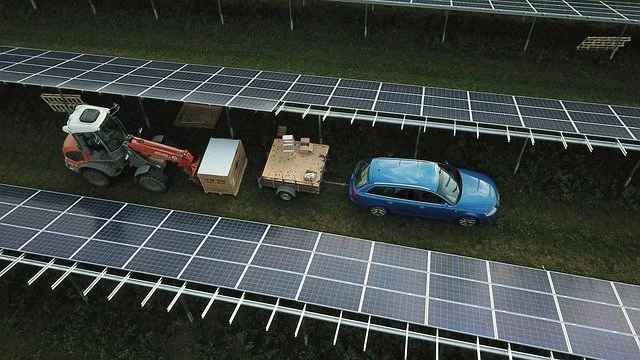Eminent Domain and Renewable Energy
/Eminent domain is government’s ability to “take” privately owned land for a public purpose in exchange for “just compensation” paid to the landowner. How far can the “public purpose” stretch? Could a public utility use eminent domain to take land for a carbon project? Or a solar field? A private company’s data center project? The answer depends on a few factors.
The Fifth Amendment to the U.S. Constitution protects private property owners’ rights to be paid fairly, as do most (maybe all) state constitutions. We are used to hearing about eminent domain for a variety of public purposes (local, state, and federal), including roads, sidewalks, gas pipelines, schools, and other public construction projects. Now questions are being asked about what other uses eminent domain could be used to achieve.
Carbon: here in Indiana, eminent domain is occasionally available for carbon capture and sequestion or storage. By statute, the General Assembly has declared that the use of carbon dioxide transmission pipelines and the underground storage of carbon dioxide are a public use. I.C. 14-39-1-3. For most carbon storage projects, a private company who has secured DNR approval of a project may condemn a right-of-way or an easement necessary for constructing, maintaining, using, or gaining access to a carbon dioxide transmission pipeline. But, such a project does not have eminent domain powers to take an easement or land for carbon storage (just the pipelines). The “pilot” project in Vigo and Vermillion Counties, however, operates under a separate statute which gives it broader eminent domain powers. It can take land for the pipelines and for the subsurface storage of carbon. I.C. 14-39-1-7. Any use of eminent domain for a carbon pipeline requires the company to pay the landowner more than fair market value, pursuant to recent statutory changes. I.C. 14-39-1-9. If the owners of at least 70% of the surface area overlaying the subsurface storage space consent to develop a carbon dioxide storage facility, the remaining 30% can be forcibly integrated but must be equitably compensated. I.C. 14-39-2-4. Note: broader eminent domain rules apply to companies in the business of storing or distributing gas for public use. I.C. 32-24-5-1. In July of 2025, the state approved final regulations relating to carbon storage. See 312 IAC 30.
Solar or Wind: private companies generally do not have the authority to use eminent domain to take land to build solar or wind farms in Indiana. However, public utilities that supply, transport, or distribute electrical energy or gas have the right to use eminent domain to take land in order to accomplish the essential delivery of those services. I.C. 32-24-4-1. As we see some counties impose zoning moratoria against wind and solar projects, could this authority shift away from local governments to the statehouse in the future?
Nuclear: the development of nuclear power facilities or related infrastructure could theoretically fall within the scope of “public use.” However, the exercise of eminent domain for nuclear development in Indiana is not unlimited. Indiana statutes governing public utilities and energy facilities impose procedural and regulatory requirements for utility developments, such as obtaining a certificate of public convenience and necessity from the Indiana Utility Regulatory Commission (IURC). including I.C. 8-1-8.5 and 8-1-8.7. Perhaps more importantly, the State must comply with federal law, including the Atomic Energy Act and the authority of the U.S. Nuclear Regulatory Commission, which preempts state regulation of nuclear safety.
Data Center: so far, the State of Indiana has not declared that the establishment of large data centers is somehow a “public use” (like it did with carbon, see above). That means neither the state nor counties can use eminent domain to take private property to build a data center. The state could change its mind and pass a statute indicating data centers are a “public use,” but I do not anticipate that such a bill would be proposed in the near future.
Indiana does have broad eminent domain powers, but those powers not unlimited. No matter why the taking occurs, the state must pay just compensation. As new projects come online (and our need for power increases), we may see changes in what is considered a public use, which would change the possibilities around eminent domain. For now, renewable energy projects generally depend on voluntary participation from landowners.




